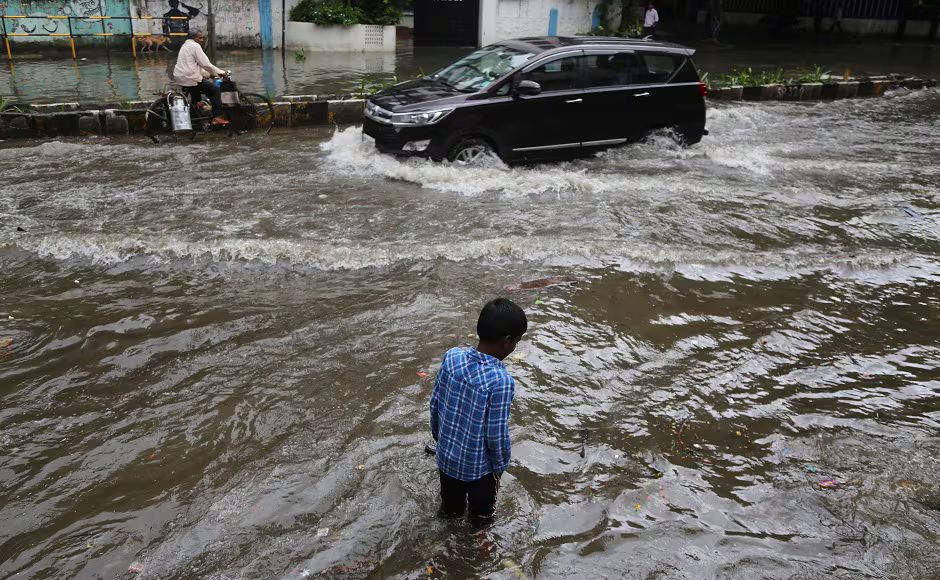As Mumbai enters the monsoon season of 2025, the city has already started to see unusually heavy rainfall. The India Meteorological Department (IMD) has issued a severe rainfall alert for various areas in the city and its suburbs, prompting residents to exercise caution. This year’s forecast has raised serious concerns about urban flooding, transport disruptions, and safety.
This article will cover everything you need to know about the severe rainfall alert, its causes, its impact on Mumbai’s infrastructure and daily life, and how residents can stay safe and prepared during this challenging weather.
Understanding the 2025 Severe Rainfall Alert
The IMD has categorized the 2025 monsoon warning for Mumbai as a “Red Alert,” the highest level in its three-tier system. This indicates extremely heavy rainfall of more than 204 mm in 24 hours may occur in some parts of the city.
What Triggers a Severe Rainfall Alert?
A severe rainfall alert is issued when meteorological data indicates the likelihood of excessive, continuous rainfall that could lead to urban flooding, waterlogging, and other serious risks.
Stronger monsoon currents from the Arabian Sea.
A low-pressure system over the Konkan coast.
Higher-than-average sea surface temperatures.
Climate change-induced volatility.
The combined effect of these climatic factors has created a strong monsoonal system over Mumbai and nearby regions.
Areas Most Affected
As of June 2025, the severe rainfall alert has been specifically issued for:
South Mumbai (Colaba, Marine Lines, Fort)
Western Suburbs (Andheri, Bandra, Goregaon, Borivali)
Central Mumbai (Dadar, Parel, Worli)
Eastern Suburbs (Ghatkopar, Chembur, Kurla)
Navi Mumbai and Thane
These areas often experience waterlogging, tree falls, and traffic delays, particularly during high tides, which hinder effective drainage of rainwater into the sea.
Impact on Daily Life in Mumbai
1. Transportation Disruptions
BEST buses and local taxis will also be affected by waterlogging and road closures.
Tip: Stay updated with real-time traffic and train alerts via official apps like M-Indicator or Mumbai Rail Info.
2. School and Office Closures
Due to the severe rainfall alert, many private and public institutions, including schools and offices, have announced full closures or work-from-home mandates. The Brihanmumbai Municipal Corporation (BMC) advises people to stay indoors unless absolutely necessary.
3. Waterlogging and Urban Flooding
Areas like Hindmata, Milan Subway, and King’s Circle are already experiencing knee-deep water. The city’s outdated stormwater drainage system struggles to handle such large volumes, leading to significant urban flooding and property damage.
Climate Change and Monsoon Extremes
Meteorologists and environmentalists are increasingly connecting the severe rainfall alert and similar weather events to global climate change. According to the IMD and studies from IIT-Bombay, Mumbai’s rainfall patterns have become more erratic and intense over the past decade.
Reasons include:
Urban heat island effect.
Loss of green cover and mangroves.
Rising sea levels.
Extreme weather events due to global warming.
Mumbai’s infrastructure has not yet adapted to the rapidly changing climate conditions, making it more vulnerable each year.
Government Response and Safety Measures
The BMC and disaster management authorities have put several emergency measures in place in response to the severe rainfall alert:
Deployment of emergency response teams in flood-prone areas.
Opening of temporary shelters and relief camps.
Pumping stations on high alert.
Suspension of ferry services along the Mumbai coastline.
Helpline Numbers:
BMC Disaster Management: 1916
Mumbai Police: 100
Railway Helpline: 139
How Citizens Can Stay Safe
Stay Informed
Social media handles like @mybmc provide real-time warnings and advisories.
Avoid Flood-Prone Routes.
Use navigation apps like Google Maps or Waze, which indicate live traffic and flooded areas. Limit unnecessary travel, especially during high tides.
Emergency Kit Essentials
Keep a bag ready with the following items:
Flashlight and batteries.
Basic medication and first-aid kit.
Drinking water and dry snacks.
Power bank and essential chargers.
Copies of IDs and insurance documents.
Protect Your Home
Elevate electrical appliances.
Clear drains and gutters.
Use sandbags if you live on the ground floor.
Business Continuity and Corporate Safety
Corporate offices in Mumbai are increasingly adopting monsoon contingency plans. These include:
Remote work policies during red alerts.
Employee safety guidelines.
Flood insurance for commercial properties.
Cloud-based systems to ensure uninterrupted access to data.
Companies with proactive HR departments are also offering shuttle services and emergency accommodation during rainfall crises.
Conclusion
The severe rainfall alert in Mumbai for 2025 is a wake-up call for both citizens and the administration. While monsoons are critical for the region, their intensity has become dangerously unpredictable. Awareness, preparedness, and timely government action are essential.
As the rain continues to pour over Mumbai, let’s stay informed, stay safe, and watch out for one another. The city’s resilience is well-known, and with the right steps, we can weather this storm together.












